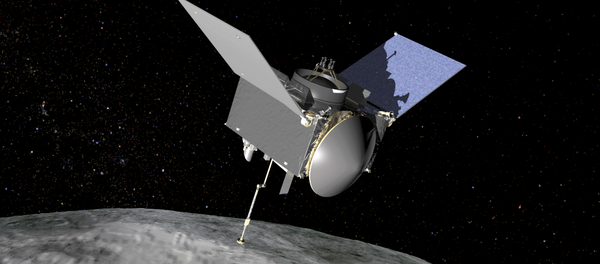The Earth is protected from harmful cosmic radiation by a magnetic field, which deflects charged particles away from the planet. However, this force is not constant. In the entire history of the planet, there have been at least several hundred reversals of the magnetic field, when the north and south magnetic poles switched places.
Besides full geomagnetic reversals, there have been partial reversals in Earth's history, when the magnetic poles moved to lower latitudes, until crossing the equator and then returning back. The last full reversal, the so-called Brunhes-Matuyama phenomenon happened about 780,000 years ago. A temporary reversal, the Laschamp event, occurred 41,000 years ago and lasted less than a thousand years, the scientists wrote.
During the reversals, changes in the magnetic field weaken the protection of the planet and raise the level of radiation. If a geomagnetic reversal occurred today, it would increase risks for near-Earth satellites, aircraft and ground-based electrical infrastructure. Geomagnetic storms arising from a harsh increase of solar activity give scientists an opportunity to assess the threats that the planet could face in the event of a sharp weakening of its magnetic field.
Meanwhile, the impact that a major storm can produce to a modern electronic infrastructure is still unclear. The definite economic damage from blackouts of power, heating, air conditioning, GPS and the Internet would be quite significant: using approximate calculations, it is estimated to at least 40 billion dollars per day.
The direct effect which a reversal of the magnetic field would produce on living beings and humans is also difficult to predict: modern man hasn't faced such an event in the history of his existence. Some studies try to link geomagnetic reversals and volcanic activity with mass extinctions; however, Mound and Livermore note that there is no noticeable activation of volcanism yet. So it's most likely that humanity will only have to deal with electromagnetic exposure.
Two factors — the remoteness of the Brunhes-Matuyama event and the observed weakening of the Earth's geomagnetic field by about five percent in a century — allow the scientists to cautiously assume that the reversal may occur within the next two thousand years. The exact timing is difficult to predict.
After having lived thousands of years on Earth, people still know little about it. The scientists have only approximate information on the composition and structure of the Earth's core, which generates the magnetic field. Just recently, in laboratory experiments simulating conditions within the Earth, Japanese scientists established that its third major component is silicon. It makes up approximately five percent of the mass of the Earth's core; the rest is iron (85 percent) and nickel (10 percent).
Although the geodynamo theory has no alternatives, it prompts some questions. According to classical magneto-hydrodynamics, the dynamo effect should fade, and the core of the planet should cool down and harden. There is no exact understanding of the mechanisms by which the Earth supports the self-generation of the dynamo effect, together with the observed features of the magnetic field, geomagnetic anomalies, migration and the reversal of the poles.
As noted by Mound and Livermore, the recent discovery of a jet-stream within the core shows the growing possibilities of science in the study of the dynamics of the planet's interior processes. The Jet-stream was formed in the liquid outer core of the Earth in an area under the North Pole. The width of the object at the moment is 420 kilometers. It reached such dimensions starting from 2000, and every year increases up to 40 kilometers in width.
Geophysicists believe that the jet-stream which was discovered is one of the objects that create a magnetic field of the Earth. In combination with numerical methods and laboratory experiments, this and other discoveries, according to experts, should greatly accelerate progress in geophysics. Scientists will soon be able to predict the behavior of the Earth's core, Mound and Livermore noted.





